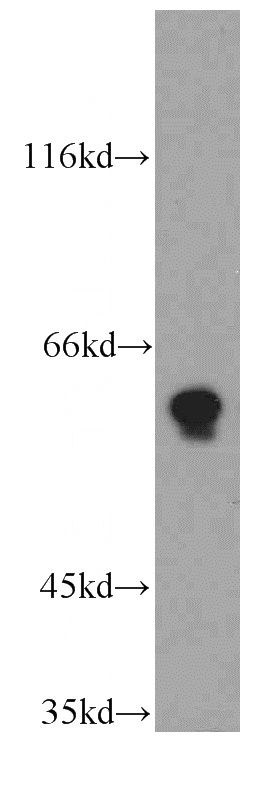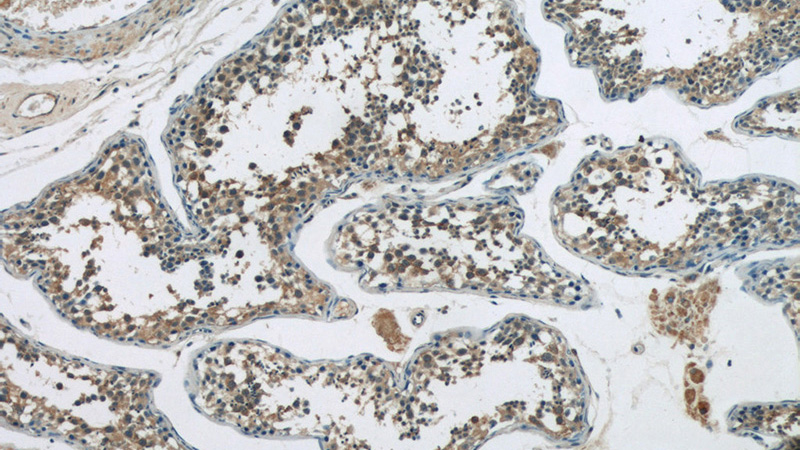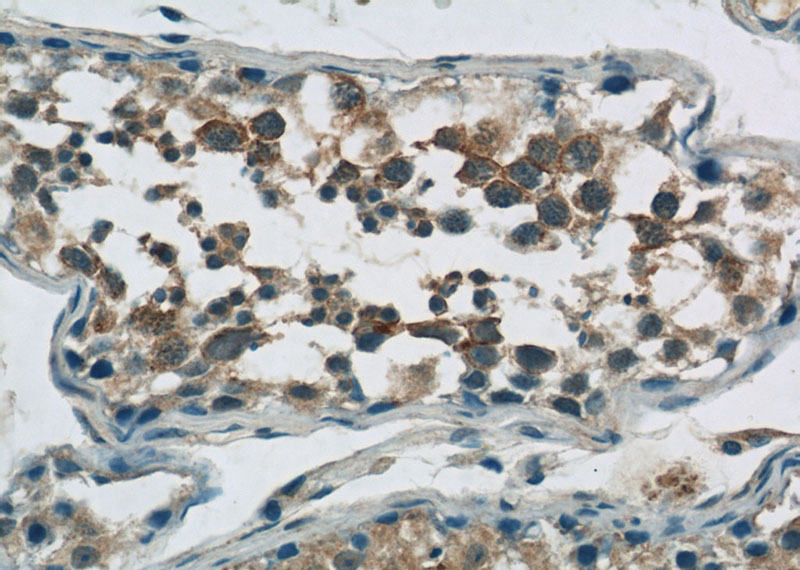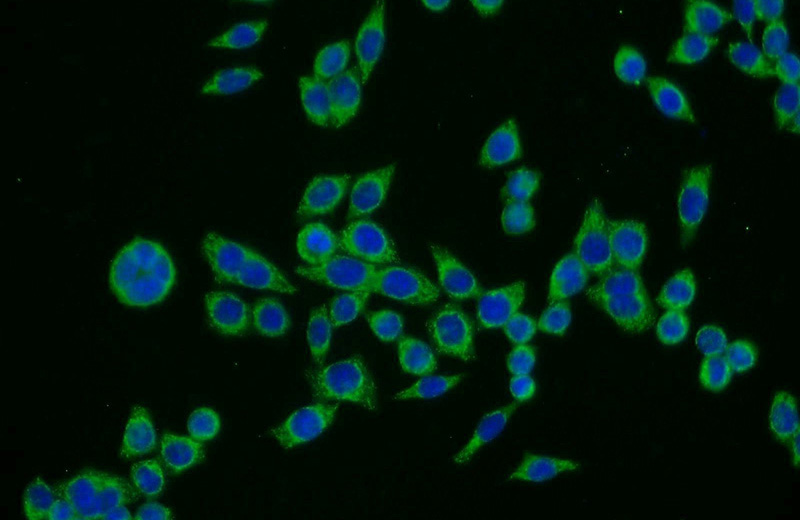-
Product Name
TPTE antibody
- Documents
-
Description
TPTE Rabbit Polyclonal antibody. Positive IF detected in BxPC-3 cells. Positive IHC detected in human testis tissue. Positive WB detected in HepG2 cells, BxPC-3 cells, HEK-293 cells, human testis tissue. Observed molecular weight by Western-blot: 62kd,64kd
-
Tested applications
ELISA, WB, IHC, IF
-
Species reactivity
Human; other species not tested.
-
Alternative names
Cancer/testis antigen 44 antibody; CT44 antibody; PTEN2 antibody; TPTE antibody; Tumor antigen BJ HCC 5 antibody
-
Isotype
Rabbit IgG
-
Preparation
This antibody was obtained by immunization of TPTE recombinant protein (Accession Number: NM_199259). Purification method: Antigen affinity purified.
-
Clonality
Polyclonal
-
Formulation
PBS with 0.1% sodium azide and 50% glycerol pH 7.3.
-
Storage instructions
Store at -20℃. DO NOT ALIQUOT
-
Applications
Recommended Dilution:
WB: 1:500-1:5000
IHC: 1:20-1:200
IF: 1:10-1:100
-
Validations

HepG2 cells were subjected to SDS PAGE followed by western blot with Catalog No:116221(TPTE antibody) at dilution of 1:500

Immunohistochemistry of paraffin-embedded human testis tissue slide using Catalog No:116221(TPTE Antibody) at dilution of 1:50 (under 10x lens)

Immunohistochemistry of paraffin-embedded human testis tissue slide using Catalog No:116221(TPTE Antibody) at dilution of 1:50 (under 40x lens)

Immunofluorescent analysis of BxPC-3 cells using Catalog No:116221(TPTE Antibody) at dilution of 1:25 and Alexa Fluor 488-congugated AffiniPure Goat Anti-Rabbit IgG(H+L)
-
Background
TPTE(Transmembrane phosphatase with tensin homology) is also named as CT44, BJ-HCC-5 and belongs to the non receptor class of the protein-tyrosine phosphatase family. The gene encodes a predicted polypeptide of 551 amino acids with at least 2 potential transmembrane domains and a tyrosine phosphatase motif. TPTE may be involved in the signal transduction pathways of the endocrine or spermatogenic function of the testis(PMID:10598804). It is putatively involved in linking the cell membrane to cytoskeleton. This protein is very similar in sequence to PTEN through the phosphatase and C2 domains, but lacks a PDZ binding motif and an extensively phosphorylated C-terminal tail(PMID:17240336). It has 4 isoforms produced by alternative splicing.
Related Products / Services
Please note: All products are "FOR RESEARCH USE ONLY AND ARE NOT INTENDED FOR DIAGNOSTIC OR THERAPEUTIC USE"
